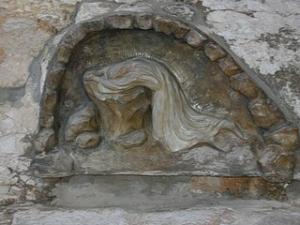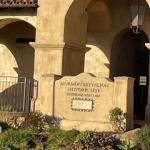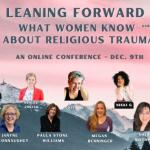
Dothan/Wikimedia Commons
Jesus Christ’s suffering in Gethsemane is sacred to Christians all over the world. In 2018 I worked with a talented student, Joshua Barringer, to learn how church leaders have talked about Gethsemane. We found that these prophetic teachings have developed from 1859 to 2018 from minor mention to complex consideration of theological understanding.
Study Details
We searched the “LDS General Conference Corpus” to identify every time a church leader used the word Gethsemane. This corpus contains more than 10,000 talks from 1851 to the 2018.
We found that a total of 139 speakers have collectively used the word Gethsemane 396 times in general conference between these dates. The median point for the usage of Gethsemane in the years examined is 1987.
Just over one-third of all uses (134) came from the nine speakers who used the word in their prophetic teachings 10 times or more. These include President Thomas S. Monson (24), Elder Neal A. Maxwell (20), Elder Robert D. Hales (19), President Marion G. Romney (15), President James E. Faust (13), President Spencer W. Kimball (12), Elder Bruce R. McConkie (11), President J. Reuben Clark Jr. (10), and Elder David B. Haight (10).
Prophetic teachings in general conference on Gethsemane have increased dramatically in the past few decades.
Early Prophetic Teachings of Gethsemane
From current perspective, a key theme (emphasized primarily in prophetic teachings between 1982 and 2018) is that in Gethsemane Jesus Christ vicariously paid the penalty for our sins. We were surprised to learn that although two significant scriptural passages link the Savior’s suffering in Gethsemane with his assuming the weight of our sins, in the early years of the Church few church leaders invoked Gethsemane to discuss the atoning aspect of Christ’s infinite sacrifice.
As far as we were able to identify, Elder John Taylor, then a member of the Quorum of the Twelve, was the only Church leader within our corpus prior to 1892 to explicitly connect the word Gethsemane with Christ’s suffering for our sins.
He did so in 1859 when he taught that Jesus “came to atone for the transgressions of men. . . . Then again, in Gethsemane, he was left alone, and so great was the struggle that, we are told, he sweat, as it were, great drops of blood.”
In 1883 he similarly stated,
When [Christ] found the accumulated weight of the sins of the world rolling upon His head, his feelings were so intense that He sweat great drops of blood. Could I tell it, or could you? No. Suffice it to say that He bore the sins of the world, and, when laboring under the pressure of those intense agonies, He exclaimed, “Father, if it be possible, let this cup pass.”
During the time period we studied, connections between Gethsemane and our sins occurred in prophetic teachings only 27 total times, or on average once every three and a half years. Many of these instances linked Christ’s actions in Gethsemane to humanity’s sins but did so without explicitly defining the anguish borne in the garden as Jesus’s literal vicarious bearing of sins. For example, in 1910 Elder Melvin J. Ballard taught that in Gethsemane Jesus was “weeping over the sins of the world.”
Acceleration in the 1980s into 2000s
In the 1980s there were 31 instances of prophetic teachings that connected Gethsemane with suffering for our sins, more than a 300 percent increase from any previous decade. This spike in mentioning the connection was not merely the result of the increase in overall use of Gethsemane; rather, references tying the events in Gethsemane to suffering for sin made up nearly half of the decade’s total mentions of the garden.
Prior to the 1980s, this teaching had constituted only about 18 percent of uses of the word Gethsemane. Since the 1980s the principle of Christ’s suffering for our sins in Gethsemane has been more frequent in the prophetic teachings in general conference.
In addition to the Savior suffering for our sins, a key theme that has been increasingly discussed in general conference during this time period concerns the Savior’s submitting His will to His Father’s. For example, in 1914 President Anthon S. Lund taught,
When Jesus was suffering in the Garden of Gethsemane, he asked the Lord, if it were possible, to take that bitter cup away from Him. Can you wonder at it when you remember that He was in such agony that the sweat fell like drops of blood upon the ground? But He added, ‘Not my will, but thy will be done,’ giving us a pattern to follow in our prayers, that although we ardently desire certain things; and believe that they would be for our best good still we should be submissive to the Father’s will.
In 1995 Elder Richard G. Scott expressed personal gratitude.
The Master is our perfect example . . . How grateful I am personally that our Savior taught we should conclude our most urgent, deeply felt prayers when we ask for that which is of utmost importance to us, with Thy will be done.” 1
More recently, in 2018 Elder David A. Bednar gave a powerful expression of a lesson to remember from Christ’s acceptance of His Father’s will.
Jesus provides the ultimate example of righteous responsiveness and willing submission as He suffered intense agony in Gethsemane . . . The Savior’s meekness in this eternally essential and excruciating experience demonstrates for each of us the importance of putting the wisdom of God above our own wisdom. 2
This study has enabled Joshua Barringer and me to expand our understanding of our Savior’s atonement and our appreciation for church leaders whose words have affected our testimonies.
To learn more about church leaders’ prophetic teachings about Gethsemane, you can read the BYU Studies article that Joshua and I co-authored.
https://scholarsarchive.byu.edu/cgi/viewcontent.cgi?article=4965&context=byusq














